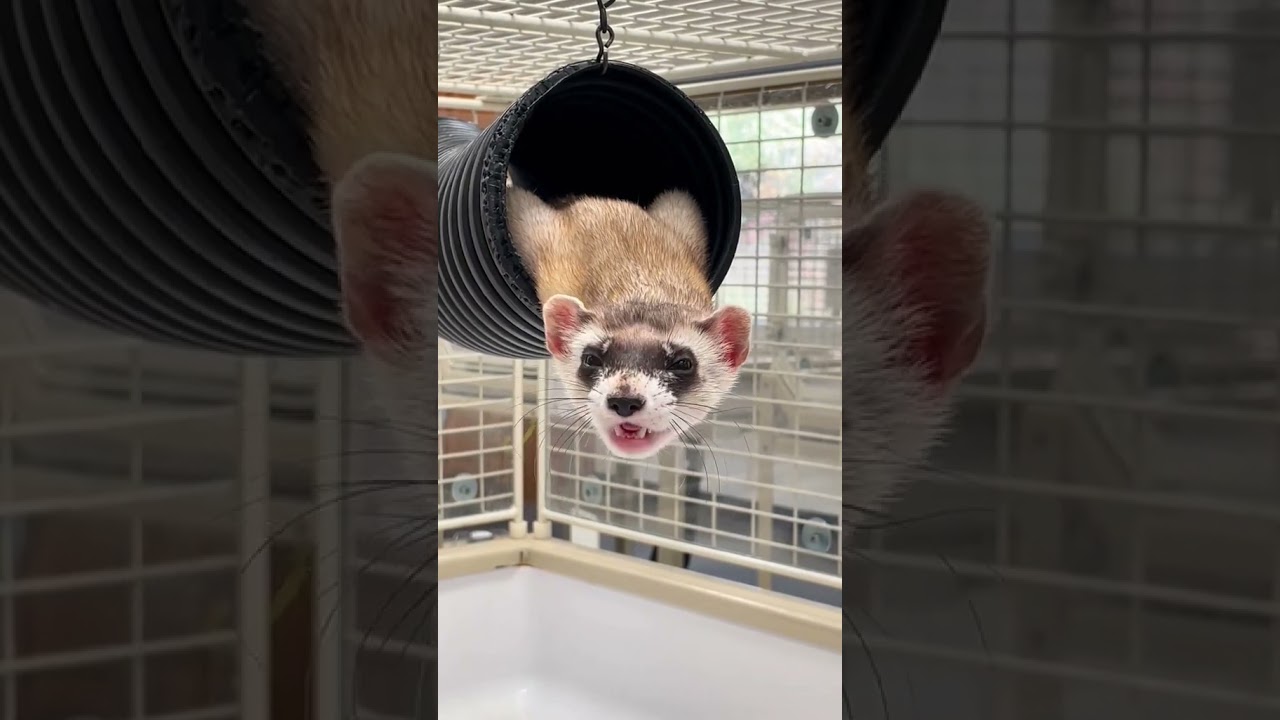– The significance of the Black-footed Ferret in ecosystem balance and conservation efforts
– Insights into the behavior and physiology of Black-footed Ferrets, including the yawning phenomenon
– The role of video compilations in wildlife education and conservation awareness
– Strategies for successful wildlife conservation, focusing on the Black-footed Ferret
The Black-footed Ferret (Mustela nigripes) has been the subject of intense conservation efforts after its numbers dwindled to near extinction in the 20th century. Often described as a significant indicator of healthy prairie ecosystems, these creatures have faced numerous challenges over the decades. One engaging way the public has been drawn to their cause is through captivating video compilations, such as the Black-footed Ferret Yawning Compilation. Videos like these entertain and play a crucial role in educating the public about wildlife conservation.
The significance of the Black-footed Ferret in ecosystem balance cannot be understated. As a predator, it plays a critical role in maintaining the population balance of prairie dogs, its primary prey, affecting the vegetation and the overall health of prairie ecosystems. The conservation of Black-footed Ferrets is a prime example of efforts to preserve biodiversity and manage ecosystems sustainably. These efforts include breeding programs, habitat restoration, and public education campaigns, all aimed at preventing the extinction of this important species.
Delving into the behavior and physiology of the Black-footed Ferret offers fascinating insights into their lives. The yawning phenomenon, often captured in video compilations, is more than just a cute action; it provides clues about their health, stress levels, and social interactions. Yawning in ferrets, as in humans and other animals, can signify tiredness but may also serve other functions, such as cooling the brain and facilitating alertness. Understanding these behaviors is vital for researchers and conservationists who monitor the well-being of populations reintroduced into the wild.
The role of video compilations in wildlife education and conservation awareness has surged in recent years, thanks to the accessibility of social media and video-sharing platforms. For instance, the Black-footed Ferret Yawning Compilation acts as a tool for engagement, drawing interest from people who may not have been previously aware of the ferret’s plight or conservation in general. By humanizing these animals through the relatable act of yawning, the video encourages empathy and a connection with viewers, fostering a sense of responsibility toward conservation efforts.
Successfully conserving wildlife like the Black-footed Ferret requires a multipronged approach. This involves habitat protection, scientific research, breeding and reintroduction programs, and public education. Each aspect is critical in its own right but works best when integrated with the others. Organizations involved in ferret conservation coordinate with landowners, government agencies, and other stakeholders to secure and manage habitats. Scientific research, including genetic studies and health monitoring, guides these efforts by identifying the most pressing needs and effective interventions. Public support, bolstered by educational resources like the Black-footed Ferret Yawning Compilation, helps secure funding and political will for conservation projects.
In conclusion, conservation is a complex field involving various strategies, from the scientific to the socio-cultural. The Black-footed Ferret is a key example of how varied approaches—from meticulous scientific research to engaging public communications like yawning compilations—work in concert to protect and revive endangered species. Recognizing the interdependence of species within ecosystems and the role humans play in these systems is paramount for sustainable conservation efforts. As we move forward, the continued focus on education, awareness, and scientific inquiry will remain crucial in the fight to preserve the rich biodiversity of our planet.
*****
Source Description


